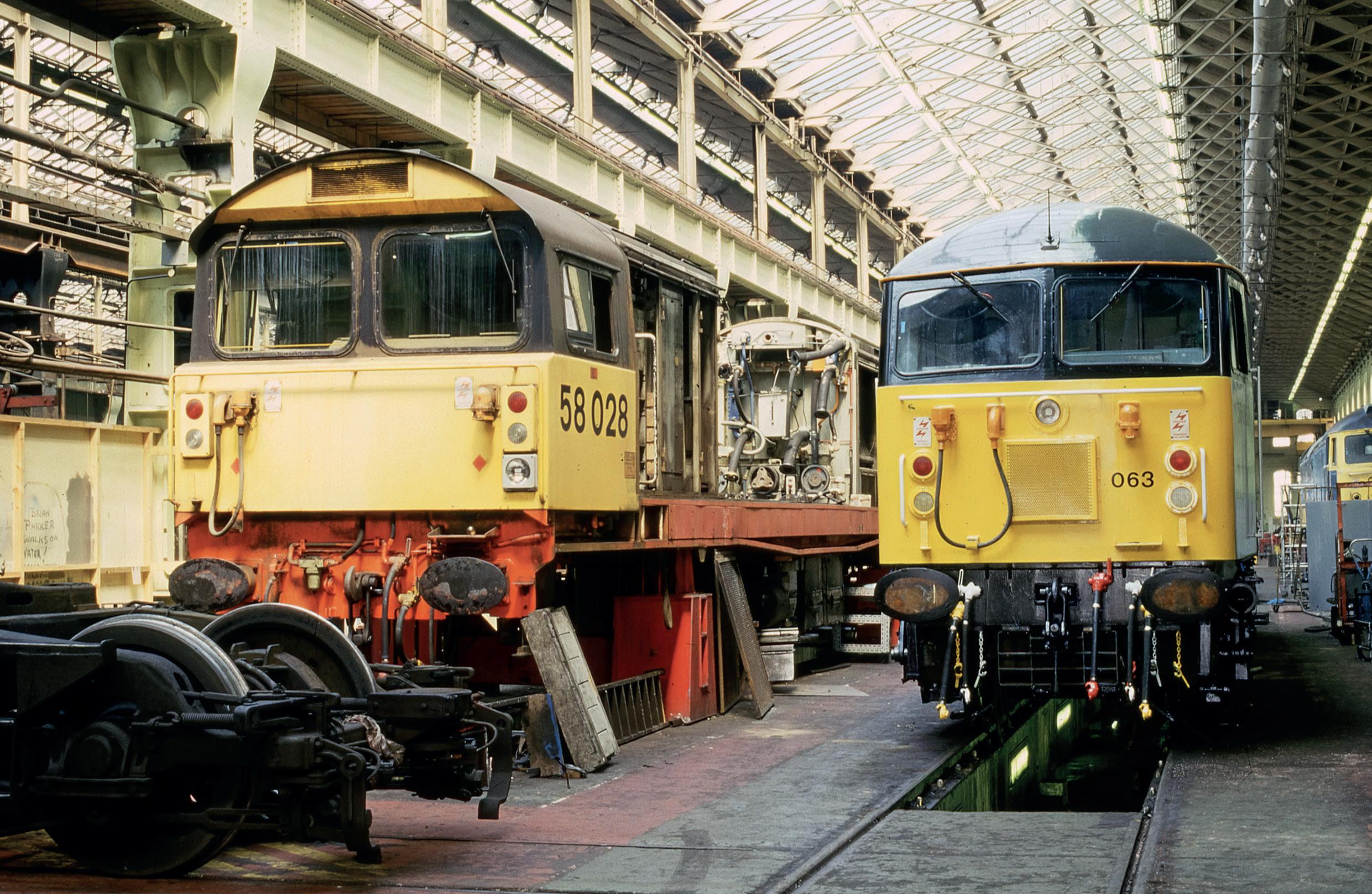

DONCASTER WORKS
Images at and accessible to the Transport Treasury archive
IN THE WORKS

What were to become the LNER’s Classes J4 and J5 have a complicated history involving different size boilers and cylinders before a common design evolved with Gresley starting his own range of ‘Standard Goods’ locomotives in 1912 – a total of 157 J5s entered LNER ownership. The final batch of Ivatt-designed GNR J5s was initially ordered as a batch of 25 from Dübs & Co. It was from this order that 12 were supplied to the Midland & Great Northern Joint Railway (M&GN) in 1900. No 91 entered traffic that October, being renumbered as 091 in May 1937 when the LNER took over the maintenance of the M&GN locomotive fleet. It was allocated 4166 under the 1946 renumbering scheme but this was not to be carried as the locomotive was withdrawn from service at South Lynn depot on 26th January that year. It is seen here on 23rd May 1937 following overhaul at which time it was repainted and renumbered. (George Barlow)
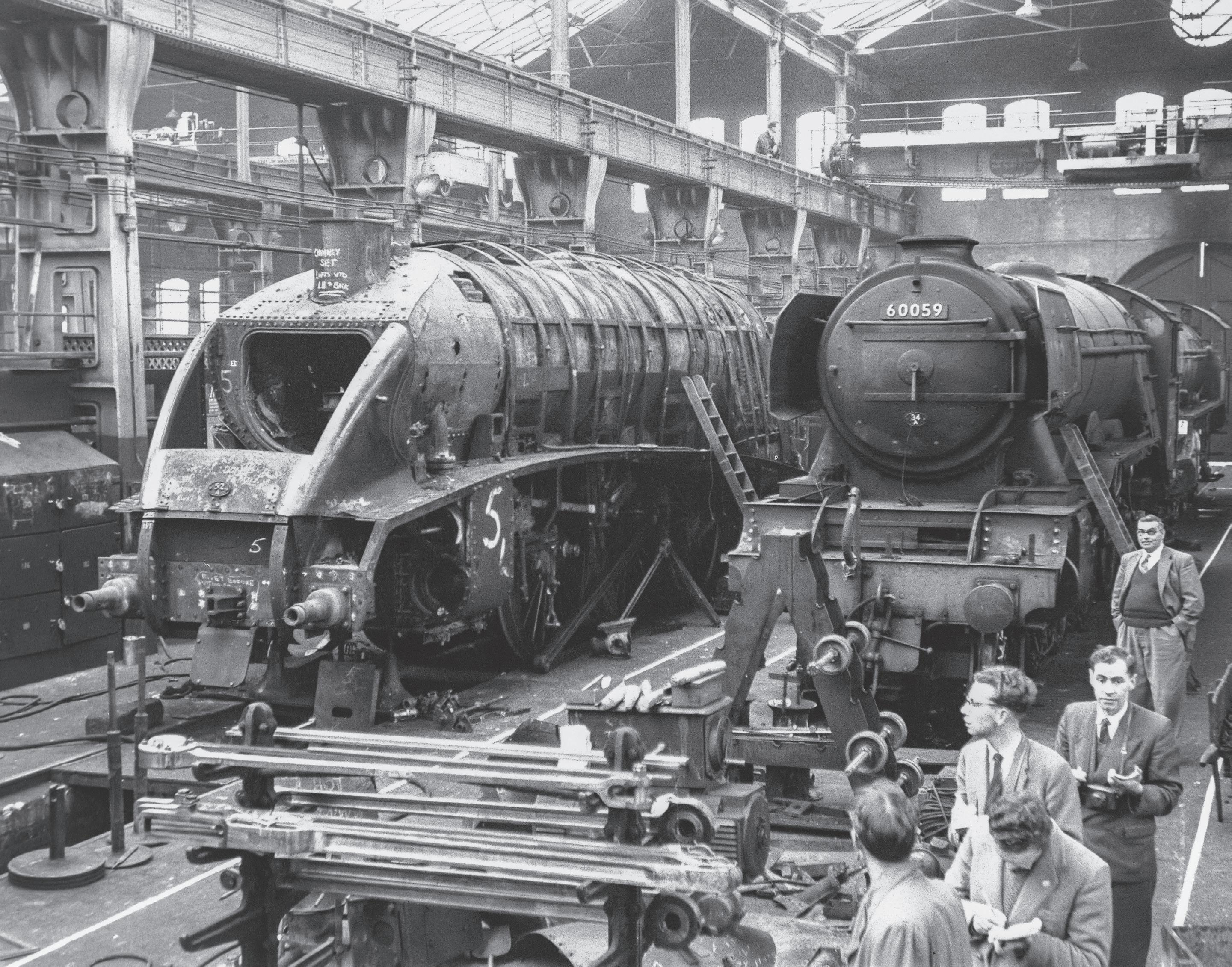
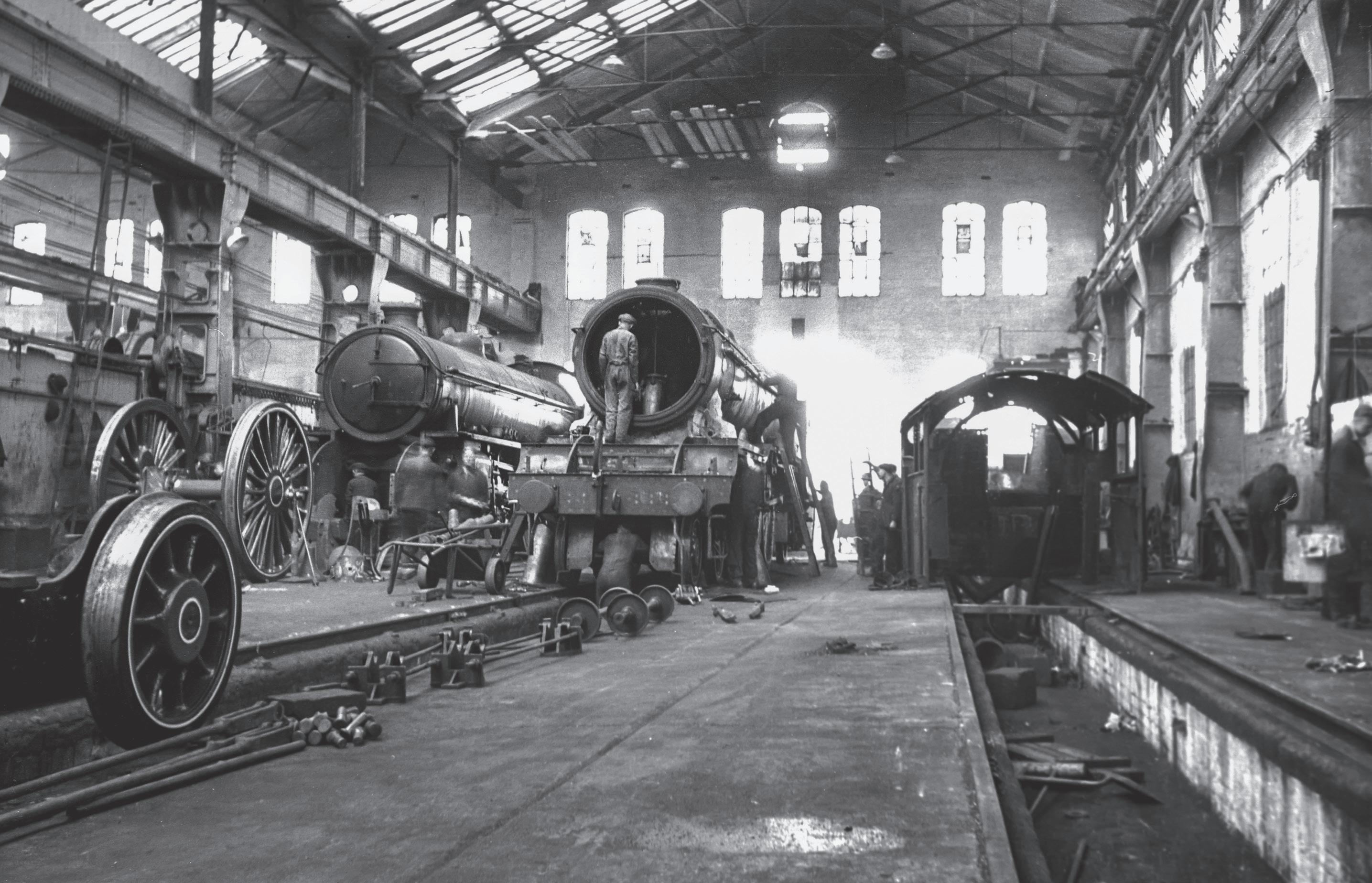
The inside of the Crimpsall repair shop is seen in this undated view, but judging by the lining on the wheel set visible in late LNER/early BR days, unfortunately the photographer did not identify either of the locomotives. The B1 on the left has had its buffer beam removed, presumably as a result of accident damaged that required its replacement, with the A3 undergoing a Light overhaul. (Roy Vincent)
Left: No 60007 Sir Nigel Gresley has just entered the works for an overhaul – its motion has already been removed. The locomotive entered service as No 4498 on 30th October 1937 being allocated to Kings Cross for service on the ECML. It was renumbered to 7 on 12th January 1947, gaining its BR number on 24th March 1948. Its final depot was Aberdeen Ferryhill where it arrived on 20th July 1964, being used on the three hour expresses from there to Glasgow. It was withdrawn on 1st February 1966 and sold for preservation to the A4 Locomotive Society. (Transport Treasury)
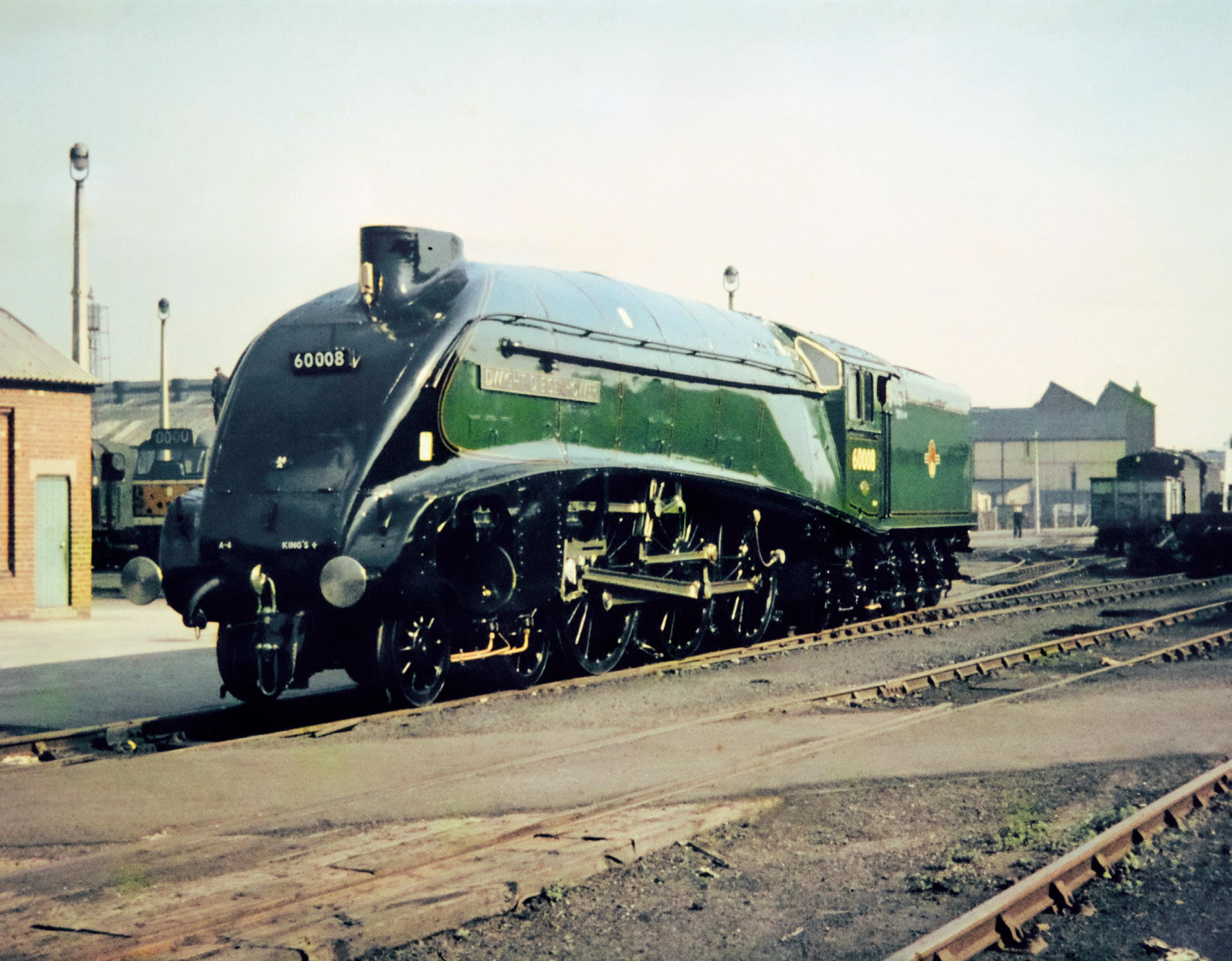
Below: After making its final visit to the Works for overhaul, No 60008 Dwight D Eisenhower is ready for its last journey (at the time) to the United States for preservation at the National Railroad Museum at Green Bay, Wisconsin in 1963. It would, of course return to the UK in 2012/13 to join the other five surviving A4 class members to mark the 75th anniversary of the 126mph world speed record for steam, achieved by Mallard in 1938. (Transport Treasury)
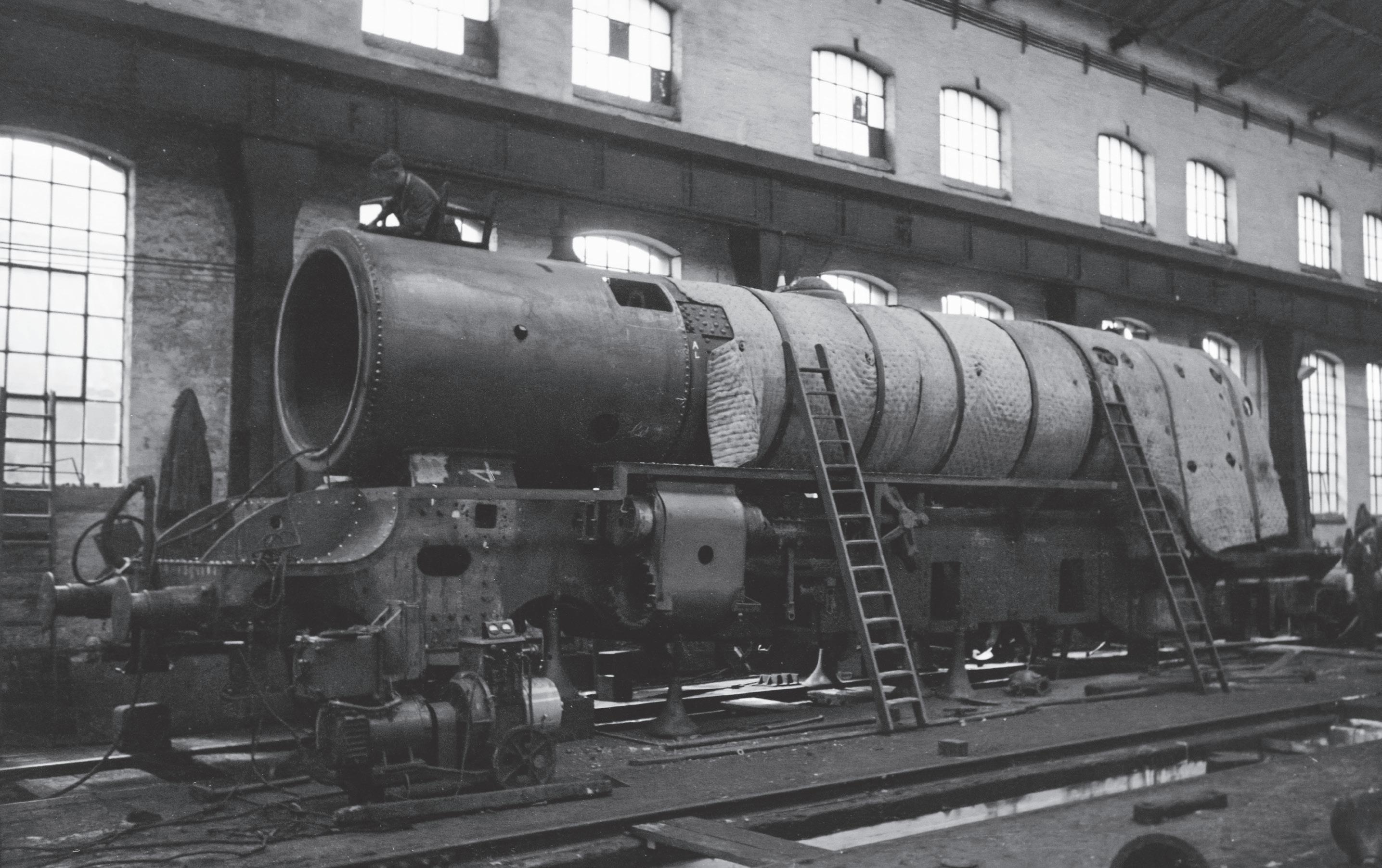
Nigel Gresley was knighted in 1936, and died in office on 5th April 1941. His replacement was Edward Thompson (25th June 1881-15th July 1954) who started a muchneeded programme of standardisation that included rebuilding a number of his predecessor’s designs, including the V2 express goods and P2 Mikado locomotives. One of Thompson’s A2/3s is seen under construction in the works during June 1947. This was part of an order for 30, however only 15 were completed, all entering service after his retirement. The remainder of the batch were completed to Peppercorn’s revised design. No 500 (60500) Edward Thompson was the 2,000th locomotive to be completed at Doncaster and named after its designer. All of his Pacifics had three sets of divided drive – the inside cylinder driving on the leading coupled wheels and the outside ones driving the second axle. Three sets of Walschaert’s valve gear replaced Gresley’s conjugated arrangement and all were fitted with double chimneys from new. If the date is correct this is either No 522 (60522) Straight Deal that entered service at Grantham on 19th June 1947 or No 523 (60523) Sun Castle that entered service at Kings Cross on 2nd August 1947. (Roy Vincent)
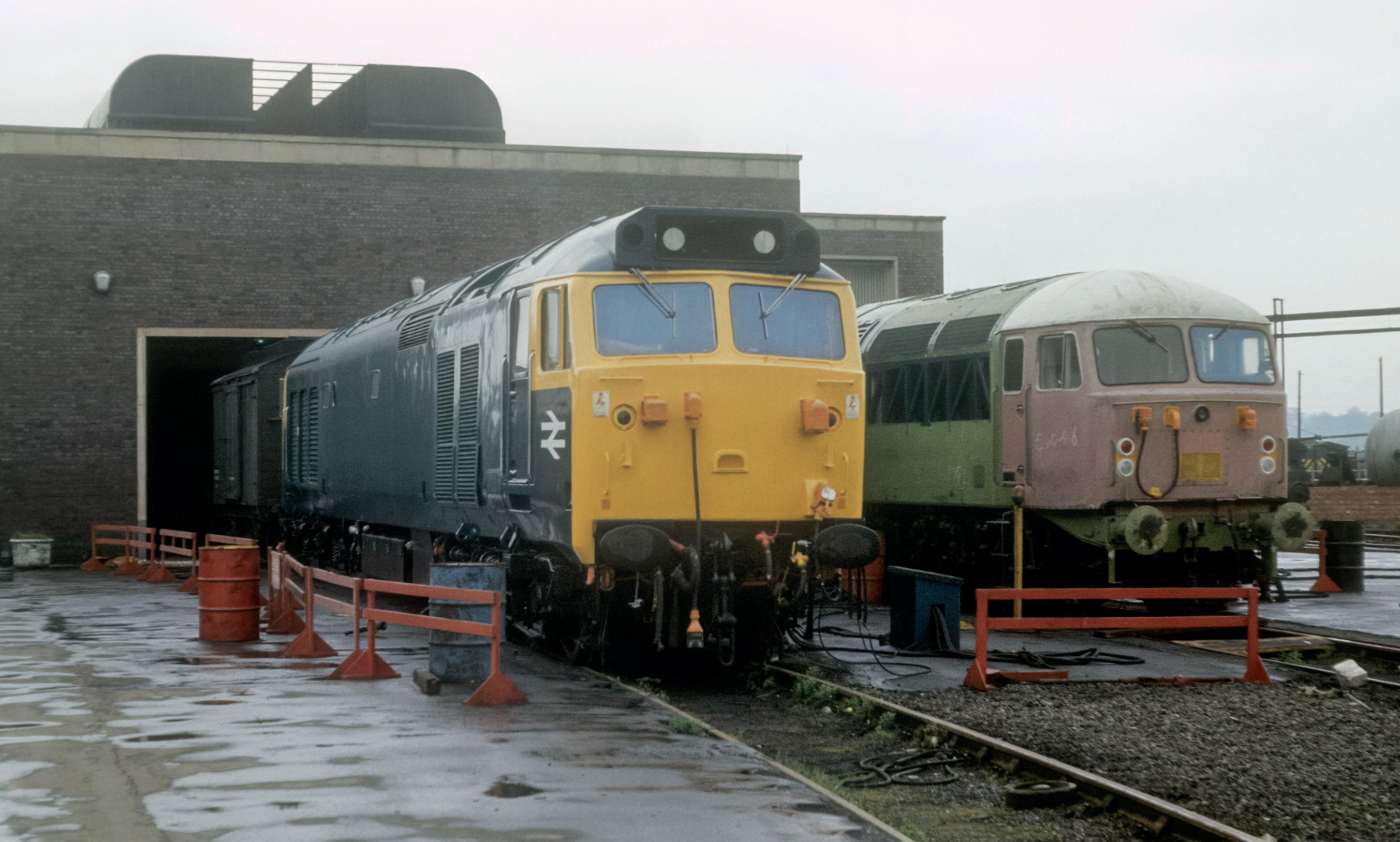
Class 50 No 50031 stands alongside Class 56 No 56046 outside the Diesel Locomotive Test House on 14th May 1978 – the Plant had been equipped with one of the most modern in the country. Two locomotives of up to 2,000hp (1,419kW) each could be tested simultaneously or alternatively one of up to 4,000hp (2,983kW), it is fully sound proofed and no noise reaches the outside world. No 50031 was new to traffic on 1st July 1968 as No D431, gaining its TOPS number on 16th February 1974. The Class 56 was undergoing final testing before entering the paint shop, it entered traffic on 18th July 1978 – it was withdrawn in July 2002 whilst the Class 50 survives in preservation. The Class 50 was named Hood on 28th June 1978 after the ill-fated battleship, constructed by John Brown & Co and commissioned on 15th May 1920. It was destroyed on 24th May 1941 with the loss of 1,415 lives. (Bernard Mills)

The last steam locomotive to be built at Doncaster was BR Class 4MT 2-6-0 No 76114, which is seen here with some of the men responsible for its construction. It entered traffic on 17th October 1957 at St Rollox; with the exception of the Western Region, the class were allocated all over the UK; No 76114 was to spend all its working life in Scotland, being allocated to Parkhead, St Rollox and Corkerhill. It was to have a short career being withdrawn from Beattock for scrap the week ending 31st December 1966. It was broken up by the Motherwell Machinery & Scrap, Wishaw, the following April. (Yorkshire Post)
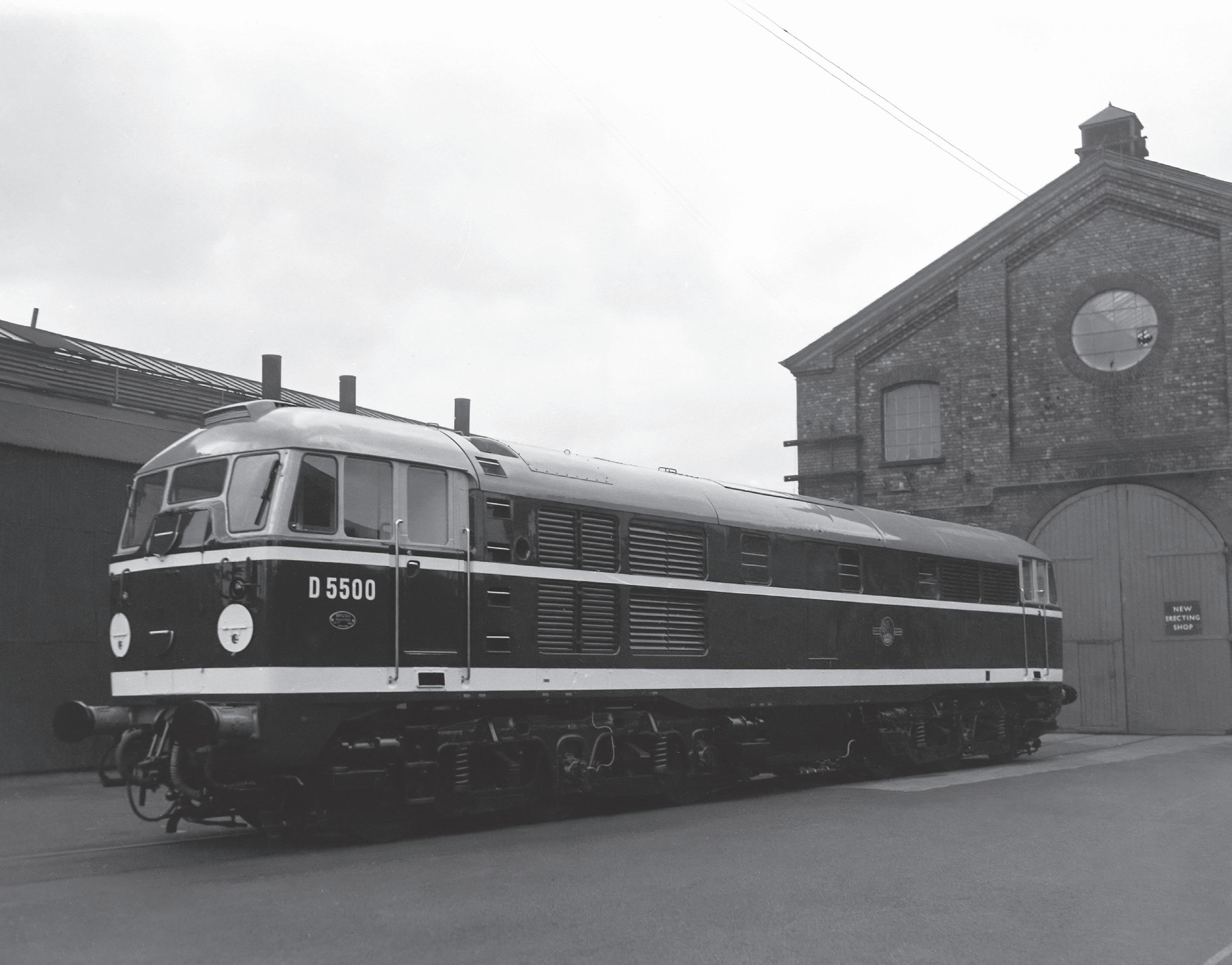
Standing outside the ‘New Erecting Shop’ is No D5500, the rear of the print is annotated ‘Brush Type 2 D5500 – first diesel loco built at Doncaster Works’, dating the photograph to October 1957. However, the first diesel constructed at Doncaster was No 8000, the first of four 350hp (261kW) diesel shunters that entered service between August 1944 (2) and March 1945 (2); additional locomotives of the standard design were built in 1958. These shunters were the only diesels constructed at Doncaster until the Class 56s – Nos 5603156115 (entering traffic between May 1977-January 1983) – and all the Class 58s – Nos 58001-58050 between May 1983 and March 1987 were built. What the photographer was not aware of was that No D5500 was at the works for acceptance trials, having been built by Brush at Loughborough. Constructed with Mirrlees power units these were not a success; Doncaster was however responsible for re-engineering them with English Electric power units, upon which they became Class 31. No D5500 entered traffic in October 1957 and saw service until withdrawn in July 1976; it was subsequently preserved as part of the National Collection. (Yorkshire Post)
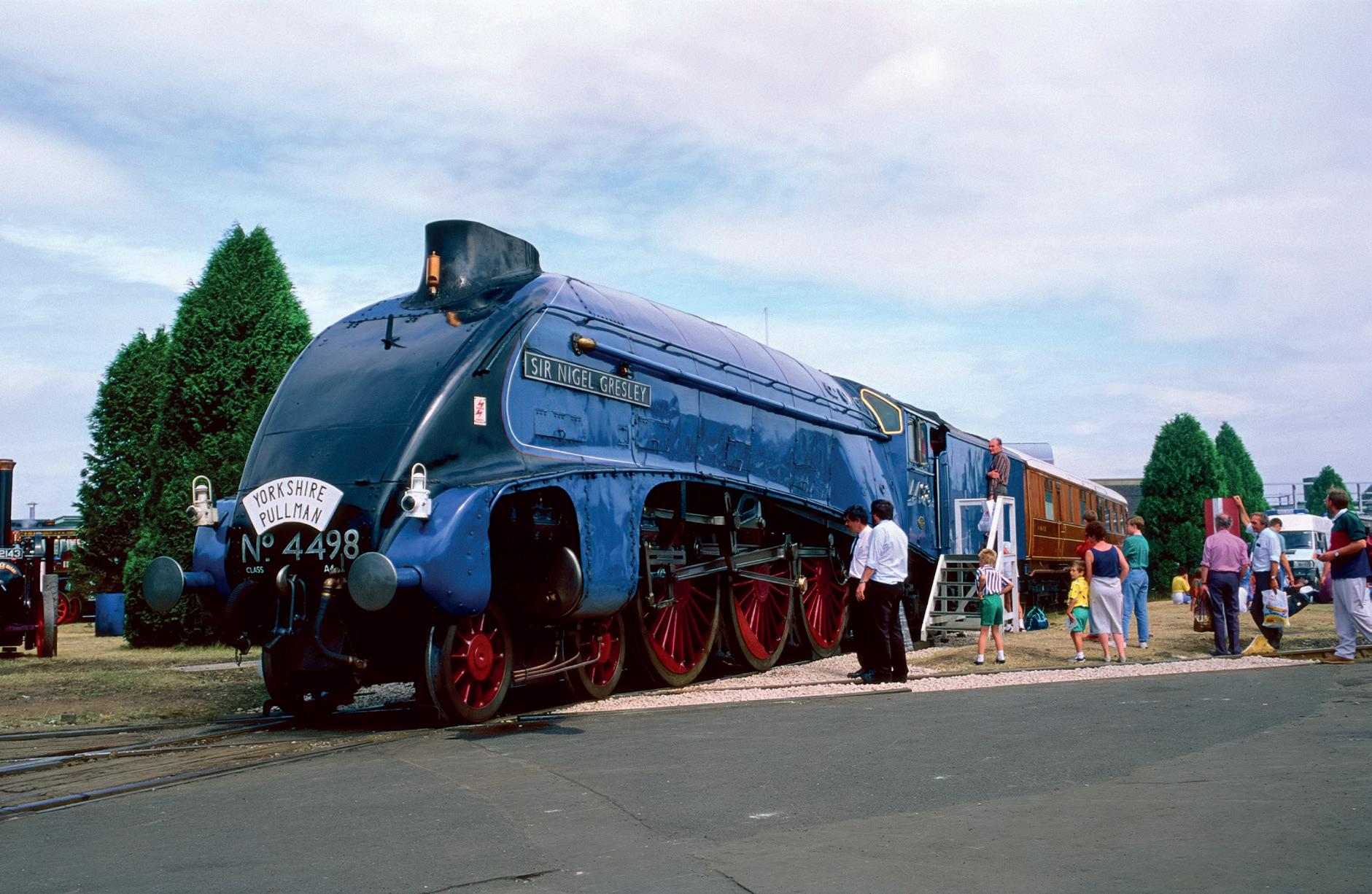
‘Doncaster Works’ is one of a series of 12 books being released in 2025 showcasing railway works and centres to commemorate ‘Railway 200’.
For more than 125 years Doncaster Works constructed locomotives for the Great Northern Railway, then as part of the London & North Eastern Railway and finally British Railways. It was from here that
£16.50 the Stirling ‘Singles’, Ivatt’s Atlantics and Gresley’s Pacifics including the famous Flying Scotsman and the world speed holder for steam, Mallard, emerged.
The final locomotives to be constructed on site were the BR-built dieselelectric Classes 56 and 58 – today only carriage refurbishment takes place in a town once famous for producing Gresley’s ‘racehorses’ and ‘streaks’ for the east coast route from London to Edinburgh.


